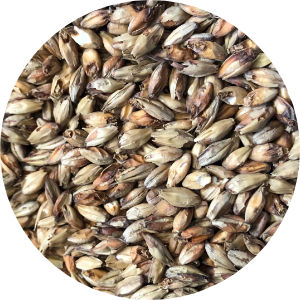Munich Malt
| Type: | Grain |
|---|---|
| Species: | Barley |
| Category | Base Malt |
Description

Dark kiln-dried, malt-aromatic and highly modified, Munich malt fulfills the demands of dark beers, but is also suitable as an additive to vary the beer color and the aroma profile of light beers. Munich is made by taking any type of barley (heirloom/specific breed or generic "2-row" blend) and processing it in a specific way to develop bread, breadcrust, and other specific flavors. Munich malt is similar to Vienna malt, and can typically be used as a replacement. Munich malt is commonly used in beers to provide added "body" or a fuller mouthfeel.
Commercial Examples: Cara Munich, Dark Munich, Dark Munich (Weyermann), Munich LME
Munich Malt Brewing Values
These are the common ranges that we've seen with Munich Malt over the years. Each manufacturer can have slightly different qualities, so these ranges are based on a combination and average.
This product must be added into the mash to be effective.
| SRM SRM is a scale for measuring the color intensity of a beer. Low SRM values indicate a pale straw color while higher values mean the style should have a darker color. Learn more » |
–
10-20 SRM(8 - 15° Lovibond) |
|---|---|
| Diastatic Power Diastatic power (DP) is a measurement of a malted grain's enzymes, which are responsible for converting the grain's starches into sugar during mashing. |
25-70° Lintner |
| PPG PPG measures the maximum starting gravity (SG) of the fermentable in points/pound/gallon. This can differ based on your mash efficiency and the amount of wort collected. |
38 ppg (1.038 SG) |
| Batch Max Certain grains and adjuncts should only be used below a maximum percentage of the grain bill. Exceeding this can cause off flavors or poor mash efficiency. |
80% |
If you see an error in our data, please let us know!
We are not affiliated with any grain manufacturer. All copyrights and data are provided by their respective owners.